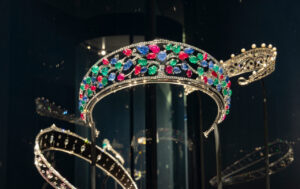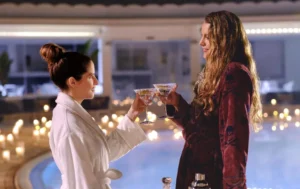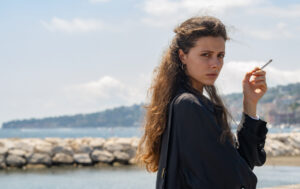Inspiring Disney: The Animation of French Decorative Arts at the Wallace Collection

Once upon a time, in a faraway land, there was a tiny kingdom. Peaceful, prosperous and rich in romance and tradition…
Well, perhaps not so far away. This particular tiny kingdom is the Wallace Collection, a few streets behind Oxford Street, in the inner-city stately home of Hertford House. It is, however, rich in romance and tradition.
Inspiring Disney: The Animation of French Decorative Arts is curated by Helen Jacobson with Wolf Burchard and opens here following a run at the New York Metropolitan Museum of Art. The show explores Walt Disney’s personal fascination with France and French culture and how his Animation Studios looked to 18th-century French artworks as source material. Disney first encountered French culture as an ambulance driver in Paris after the armistice in 1918 and it clearly made a lifelong impression.
There is homemade footage from a trip Disney, his wife and his brother took to Versailles in 1935. The quick, exaggerated gestures of those being filmed leave one wondering how much of this is down to the jerky quality of old film and how much is excitement at this new technology. The show makes a strong conceptual link between the new pottery techniques developed in the 1750s and the new technique of animation almost two hundred years later. A biscuit porcelain figurine of a child peeping into a magic lantern (c.1750) technically demonstrates advances in porcelain (the ripples in the fabric of the clothing look like they have weight and movement) and also the sense of wonder at the new. Both mediums must have seemed like magic to their audiences.
The show explores the idea of objects as storytellers. Two porcelain dancers from Hochst Manufactory (c.1758) still suggest movement in the glances of their heads and the delicate angles of their hands, more than 250 years after being fired into that position forever. The figurines are paired with footage of an early short film, The Clock Dance, where two figures prance a gavotte.
A magnificent knee-hole writing table attributed to Bernard I van Risenburgh (c.1715) tells the classical story of an unimpressed goddess, Diana, being caught bathing and turning the intruder into a stag, in marquetry. Mother of pearl is used to represent the pool. It is a work of exquisite genius.
Perhaps most emblematic of the French aesthetic influence over Disney is Jean-Honore Fragonard’s The Swing. It is clear to see the link: in the colour palette; the layering of foliage and other background scenery to create depth; the anthropomorphism (if you look closely, the lady’s poodle is both horrified and delighted by the scene before him); the romance; and the playfulness, as the swooning paramour prepares to catch the silk slipper flung free of his lady’s aristocratic foot.
The show highlights the wit and whimsy of the Rococo style, something that Disney artists clearly drew from. You are reminded that someone had the wit to see a foot stool as a cantankerous dog barking at Mickey Mouse and to give Mrs Potts the teapot blushed circles on her “face”. Sketches for Aladdin’s carpet in various “moods” show how the animators could imbue recognisable human emotion in something that didn’t even have limbs, much less anything resembling a face.
The further you go into the exhibition, the more persuasive and thought-provoking it becomes. It inspires questions: how much did Cinderella (released in 1950) influence the 1950s concept of the ideal housewife, if at all? Her gowns have a similar silhouette to Dior’s New Look. How much did she influence the prevailing ideal of petite equalling feminine? As with many notions of the feminine ideal, Cinderella’s tiny, tiny feet would have been highly impractical: constantly face-planting as you can’t balance wouldn’t have been very elegant. How much did the fantasy of an enchanted world inhabited by inanimate objects that are actually not only animate but actively helpful owe to the indifferent brutality of the aftermath of war that Disney witnessed at just 16?
A highlight of the show are the stills from Cinderella’s magical transformation from rags to riches. The sequence needed 24 drawings per second and here you see them, complete with hand-drawn fairy dust and sparkle, the illusion of weight in Cinderella’s dress and balletic arm movements. Peeking behind the curtain of illusion risks spoiling the magic but here, counter-intuitively, it only adds to it. The same could be said of the whole exhibition. Regardless of the subject, any look behind the workings of genius is fascinating. This show emphasises how much one man’s (as it has generally been up until recently) vision can change the world if it’s singular and strong enough.
Cinderella may not have been a redhead or had a Caribbean crustacean sidekick (and therefore will always be inferior to Ariel to this critic’s inner child) but this show lacks nothing. You don’t want to leave although, as soon as you do, you want to watch the films it features. Surely there can be no higher compliment to this beguiling show than that.
Jessica Wall
Images: The Wallace Collection
Inspiring Disney: The Animation of French Decorative Arts is at the Wallace Collection from 6th April until 16th October 2022. For further information visit the exhibition’s website here.

























Facebook
Twitter
Instagram
YouTube
RSS